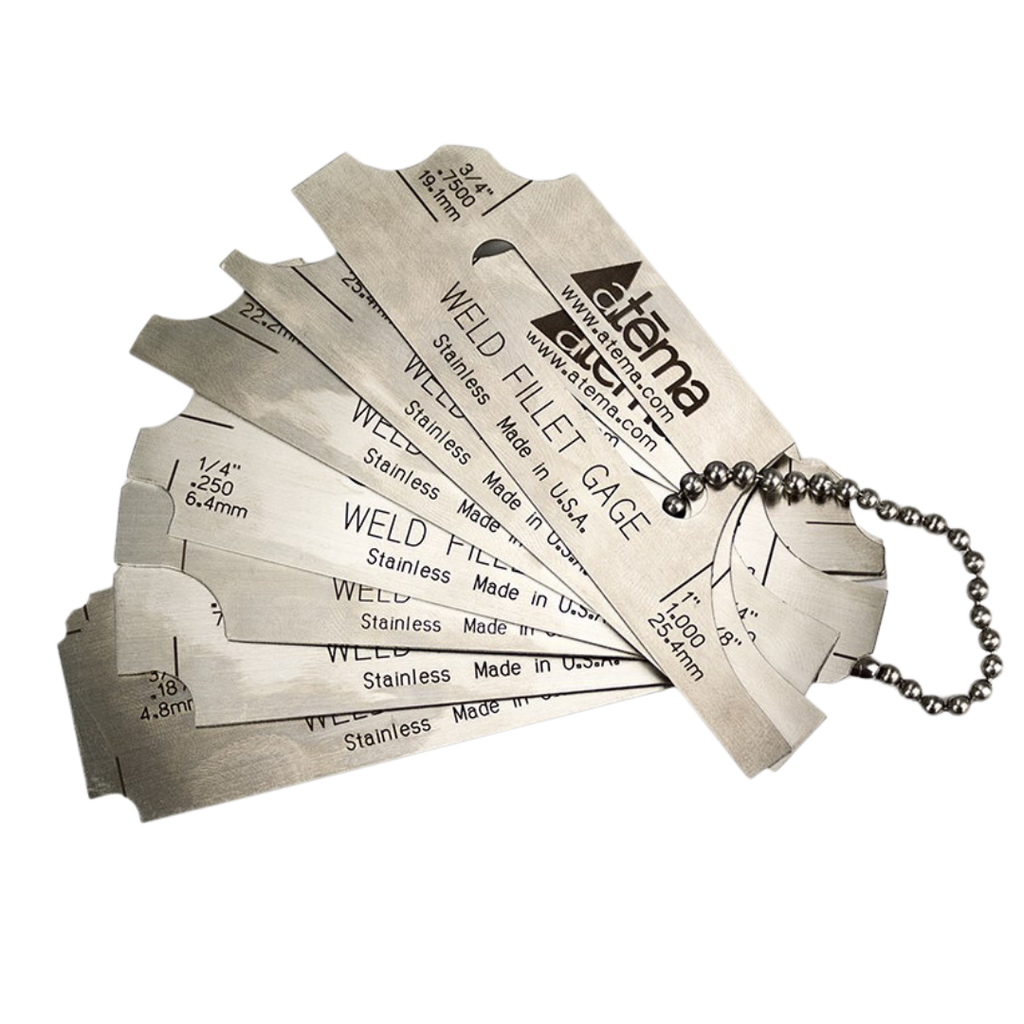Ingenious Strategies to Fillet Weld Assessment and Screening: Enhancing Weld High Quality and Conformity Criteria
In the realm of welding, the top quality and integrity of fillet welds play an essential function in making sure the structural sturdiness and dependability of numerous industrial elements. With the constant drive for boosted effectiveness and conformity with rigid criteria, the expedition of innovative strategies to fillet weld examination and screening has actually become important.
Advanced Non-Destructive Testing Approaches
Using state-of-the-art modern technologies, advanced non-destructive testing methods play an essential duty in guaranteeing the stability and high quality of fillet welds. These methods, such as phased range ultrasonic testing (PAUT) and magnetic particle screening (MPT), offer thorough insights into the weld's inner structure without triggering any damages to the material. PAUT, as an example, utilizes multiple ultrasonic components to examine the weld from different angles, supplying a thorough visualization of prospective issues like lack of blend or cracks.
By employing these innovative non-destructive testing techniques, weld assessors can precisely evaluate the top quality of fillet welds, guaranteeing conformity with market standards and regulations. The capacity to identify defects early on not just enhances weld high quality however additionally avoids pricey rework or failures in structural integrity, underscoring the value of these innovative screening techniques in welding assessments.
Robotics and Automation in Assessment

The integration of robotics and automation has transformed the assessment process for fillet welds, improving effectiveness and accuracy in high quality evaluation. Robotics use specific control and repeatability in inspecting welds, guaranteeing trustworthy and consistent outcomes. Automated systems can be set to follow particular inspection paths, ensuring detailed coverage of welds and minimizing the risk of human mistake.
Robotic assessment systems furnished with innovative sensing units can discover and determine weld functions with high precision, providing in-depth information for evaluation. These systems can determine flaws such as cracks, lack of fusion, and porosity, allowing punctual rehabilitative activities to be taken. Furthermore, robotics and automation enable for real-time information collection and evaluation, supplying prompt comments to operators and assisting in fast decision-making processes.
Moreover, using robotics and automation in fillet weld examination enhances overall productivity by reducing inspection times and raising examination throughput. By streamlining the examination process, makers can make sure weld quality and compliance standards are met successfully, inevitably resulting in cost savings and improved item quality.
Using Artificial Knowledge for Evaluation
Synthetic intelligence plays a critical role in improving the performance and accuracy of analysis in fillet weld inspection procedures. AI formulas can quickly process huge amounts of data from weld examinations, discovering issues or inconsistencies that might be testing to recognize with the nude eye.
Moreover, AI systems can gain from previous examination data, continuously improving their capability to determine possible problems and discrepancies in fillet welds. This adaptive understanding ability boosts the total high quality control process, lowering the probability of human error and ensuring that welds meet the required standards. By integrating expert system into fillet weld evaluation, industries can accomplish higher levels of effectiveness, uniformity, and compliance in their examination practices.
Portable Equipment for On-Site Inspection
Enhancing area inspection performance, the fostering of site here mobile devices reinvents on-site analysis procedures for fillet welds. These devices offer flexibility and benefit, permitting assessors to carry out comprehensive examinations in various locations, consisting of tough or remote settings. Portable tools such as ultrasonic screening devices, magnetic particle inspection devices, and digital radiography systems give real-time information and high-resolution imaging capacities, enabling quick decision-making and instant comments on weld top quality.
One significant benefit of portable tools is their ability to improve evaluation treatments, lowering downtime and boosting overall productivity - Gauge Fillet Weld. Assessors can easily transfer these devices to various job sites, removing the requirement for transporting heavy machinery or elements to off-site centers. In addition, the mobility of these devices promotes cost-effectiveness by lessening transport expenses and speeding up evaluation timelines
Furthermore, making use of portable tools for on-site inspection advertises positive high quality control actions, as assessors can quickly identify and resolve any type of potential welding flaws or disparities. By incorporating these ingenious modern technologies into on-site evaluation techniques, welding specialists can make sure conformity with sector requirements and improve weld top quality, ultimately resulting in enhanced structural honesty and security in different welding applications.
Combination of Information Management Solution

Having actually enhanced on-site examination procedures with the use of portable tools, the following phase involves the smooth combination of data administration systems to even more enhance performance and information analysis capacities in fillet weld examination and screening. By incorporating information management systems right into the evaluation process, organizations can improve data collection, storage space, and analysis. This assimilation permits real-time monitoring of weld quality, click resources immediate identification of problems, and punctual decision-making to correct any kind of problems that may emerge throughout the inspection process.
Data monitoring systems play a crucial function in systematizing assessment information, promoting simple gain access to for accredited personnel, and making sure information honesty and safety. Through the integration of these systems, inspectors can generate detailed records, track historic information for trend analysis, and improve total process performance. The combination of data management systems enables seamless communication in between different stakeholders included in the evaluation procedure, cultivating cooperation and boosting general top quality control procedures. Inevitably, the combination of data management systems serves to boost the standards of fillet weld inspection and testing, making sure conformity with industry laws and improving weld quality.
Final Thought
In conclusion, innovative approaches to fillet weld assessment and testing have considerably boosted weld top quality and conformity criteria. Advanced non-destructive screening techniques, robotics, automation, man-made intelligence, portable devices, and data management systems have transformed the means weld evaluations are conducted. By about his utilizing these technologies, markets can guarantee that welds fulfill the required high quality standards and regulations, ultimately enhancing total efficiency and security in welding processes.

Having actually maximized on-site inspection procedures with the utilization of portable tools, the next phase entails the smooth combination of information management systems to better improve effectiveness and data evaluation abilities in fillet weld evaluation and testing. Ultimately, the assimilation of information management systems offers to raise the requirements of fillet weld inspection and screening, making sure conformity with industry policies and improving weld top quality.
